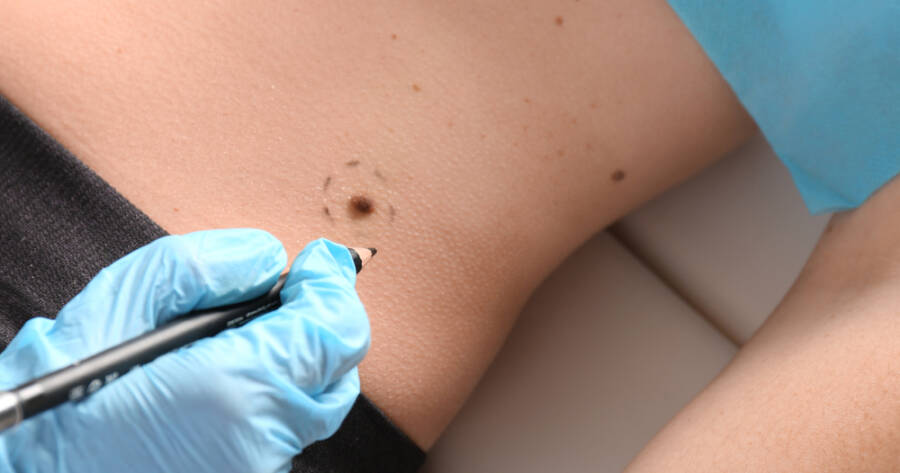Birthmarks are common skin blemishes that can range from barely noticeable to quite prominent. While they are usually harmless, some individuals may wish to remove them for cosmetic reasons or due to discomfort. Fortunately, several effective options exist for birthmark removal, each with its benefits and considerations. By understanding these methods, individuals can explore solutions that align with their personal preferences and medical advice. A careful approach ensures that the chosen method prioritizes safety, effectiveness, and satisfaction.
Understanding Birthmarks
Birthmarks come in various forms, generally categorized as vascular or pigmented. Vascular birthmarks, such as hemangiomas and port-wine stains, occur due to abnormal blood vessels, while pigmented birthmarks, like moles and café-au-lait spots, result from excess pigment in the skin. Although mostly benign, these marks can sometimes present health concerns or affect self-esteem, prompting the search for removal options.
Consultation with healthcare professionals can help assess the nature of a birthmark and determine if removal is advisable. Factors like size, location, and type play a role in identifying suitable removal methods. Understanding individual characteristics of a birthmark is crucial in shaping an appropriate treatment plan that ensures optimal outcomes.
Laser Therapy: A Popular Choice
Laser therapy is a widely used method for birthmark removal, particularly effective for vascular types. This technique involves focusing concentrated light beams on the birthmark, breaking down the blood vessels or pigments causing the mark. The body’s natural processes then gradually clear the treated tissue, reducing or eliminating the appearance of the birthmark over time.
Laser therapy is often praised for its precision and ability to target specific areas without damaging surrounding skin. While typically involving multiple sessions, this method generally carries minimal downtime, allowing individuals to resume daily activities soon after treatment. However, results can vary based on factors such as skin type and birthmark characteristics, emphasizing the importance of professional consultation and customization.
Surgical Removal: Precision and Permanence
Surgical removal is another option, often considered for larger or raised birthmarks like moles. This procedure involves physically removing the birthmark through excision, sometimes followed by stitching to close the treated area. The approach provides a permanent solution by eliminating the mark entirely, usually under local anesthesia.
Although surgery can be more invasive than other methods, it may offer immediate results, removing the birthmark entirely in one procedure. Recovery typically involves short-term wound care and minimal activity restrictions. Consultations with experienced dermatologists or surgeons ensure precise removal and minimize scarring, making surgical options viable for those seeking definitive results.
Topical Treatments: Gradual Approach
Topical treatments present a less invasive option for those interested in gradually reducing the appearance of certain pigmented birthmarks. These products often contain skin-lightening agents like hydroquinone, retinoids, or azelaic acid, which work to fade pigmentation over time. Available over-the-counter or through prescription, topical treatments offer a non-invasive alternative to more direct procedures.
While results with topical treatments can take longer to manifest and may not be as dramatic, they are considered less risky and more affordable. Adherence to consistent application and monitoring by a healthcare provider is advised to avoid potential side effects or skin irritation. Topical methods may suit those interested in subtle results and low-intensity management strategies.
Cryotherapy: Freezing Off Marks
Cryotherapy involves the application of extreme cold to remove superficial skin growths, potentially including smaller pigmented birthmarks and some vascular ones. The technique typically uses liquid nitrogen to freeze the birthmark, causing the treated skin to fall off over time, followed by regrowth of new skin.
Though often used for removing warts and superficial moles, cryotherapy’s efficacy in birthmark removal depends on the specific type and characteristics of the lesion. The procedure is generally quick and minimally invasive, with little downtime. However, it might require multiple treatments, and potential side effects like blistering should be considered during consultations with qualified professionals.
Chemical Peels: Refining Skin Appearance
Chemical peels involve the application of a chemical solution to exfoliate the skin’s top layers, promoting regeneration of new, less pigmented skin. This method may help improve the appearance of pigmented birthmarks like café-au-lait spots, achieving a more even skin tone over repeated treatments.
While deeper peels require professional administration and may involve downtime, superficial peels offer gentle and gradual refinement with little recovery needed. Careful selection of peel type and concentration is essential to avoid adverse reactions, underscoring the importance of professional guidance. Chemical peels are best suited for individuals aiming for gradual improvements in skin texture and tone.
Explore Your Path to Clearer Skin
Choosing the right method for birthmark removal involves evaluating various options that address individual needs and goals. Whether opting for precision laser therapy, the permanence of surgical removal, or the gradual approach of topical treatments, informed decisions made in consultation with healthcare professionals can guide desired outcomes.
Prioritizing safety and tailored care ensures effective management of birthmarks. By considering factors such as birthmark type, treatment invasiveness, and desired results, individuals can embark on a path to clearer skin that aligns with their expectations and lifestyle. Exploring these options empowers individuals to make thoughtful decisions toward enhancing their skin confidence.
